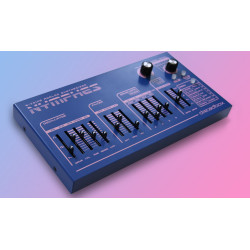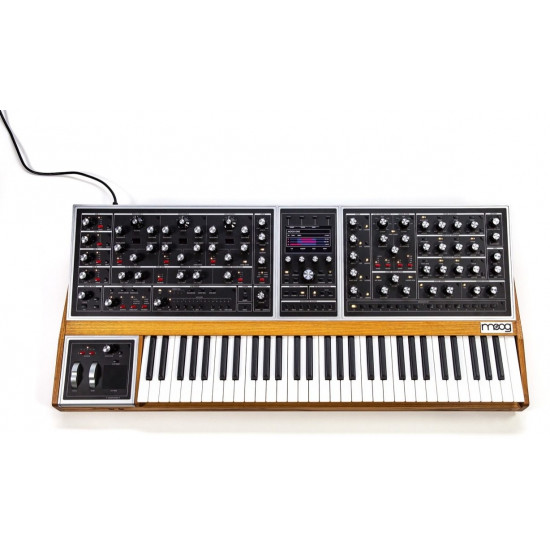
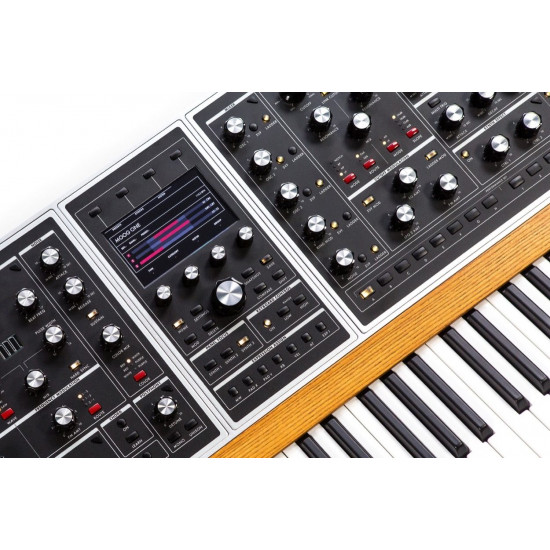
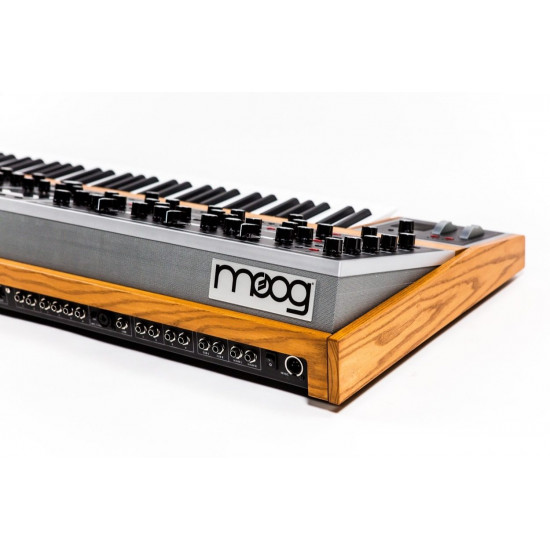
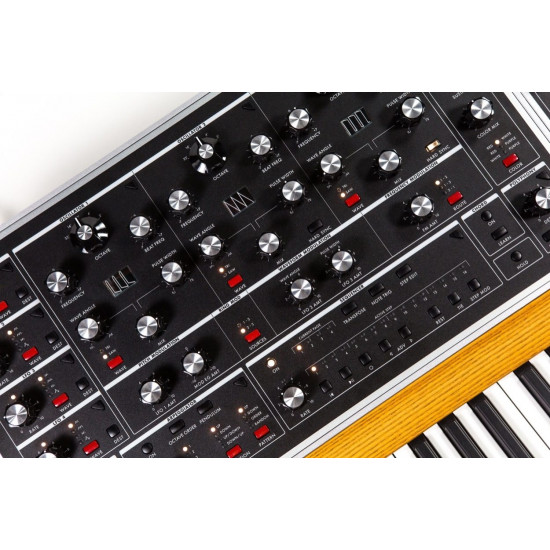
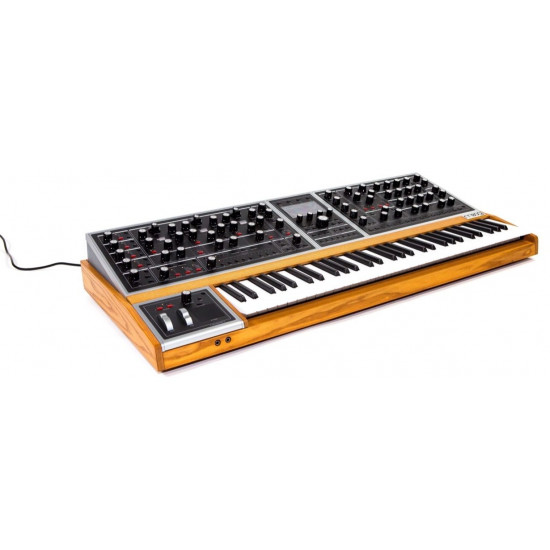
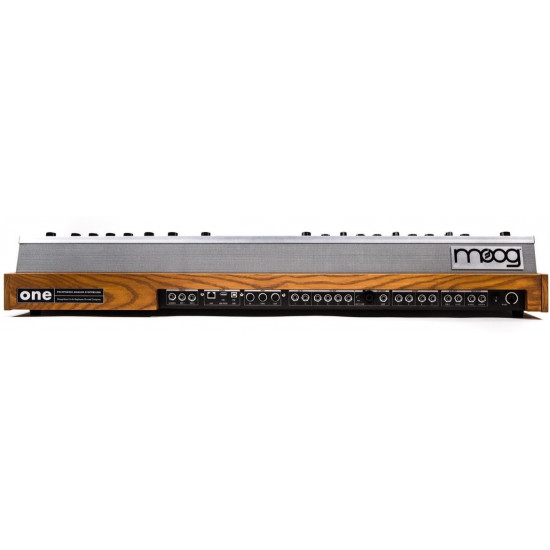






- Stock: Sold Out
- Model: MOOG-ONE16
More from this brand
Moog One Polyphonic 16-Voice Synthesizer
Moog One is the ultimate Moog synthesizer - a tri-timbral, polyphonic, analog dream-synth designed to inspire imagination, stimulate creativity, and unlock portals to vast realms of sonic potential. The first polyphonic analog synthesizer from Moog in more than three decades, Moog One is the culmination of years of research and has been developed to exceed every expectation of a polyphonic Moog instrument.
Available in 8-voice and 16-voice configurations, Moog One's polyphonic sound engine is built on the most powerful synthesizer architecture ever employed by a Moog. Per voice, Moog One offers 3 analog VCOs, 2 independent analog filters, a dual source analog noise generator, analog mixer with external audio input, 4 LFOs, and 3 envelopes. To deliver an infinitely inspiring performance experience, each of the three timbres can be easily split or layered across Moog One's expressive 61-note keyboard, each with its own sequencer, arpeggiator, and onboard effects library--including a a suite of professional reverbs from Eventide.
Secured in a hand-finished Ash cabinet and aluminum enclosure, Moog One's front panel is equipped with 73 knobs and 144 buttons, inviting physical connection with every sound shaping and performance control. Extended functionality is easily accessed via a per-module "More" button that brings additional parameters into focus using the Moog One center-panel LCD to ensure the most transparent and expedient sound creation experience possible.
Moog One is an unprecedented conduit for the expression of your own creative voice. Sculpt, shape, and transform your own sound with nearly infinite possibilities.
TRIANGLE CORE OSCILLATORS
Each Moog One voice employs three triangle core analog VCOs. The output of each oscillator is a user-defined mix of the selectable triangle / sawtooth wave, plus a variable-width pulse wave. Expanding beyond traditional oscillator designs, the rise/fall time of the triangle wave and the reset phase of the sawtooth wave can be shaped and modulated to create to a rich palette of classic analog tones. Blending the tri/saw and pulse waves together opens up dimensions of harmonic freedom, creating complex waveforms not typically found in analog synthesizers. The Moog One oscillator section is also equipped with hard sync, analog ring modulation, and FM for boundless analog sound generation.
DUAL-SOURCE NOISE GENERATOR
Each Moog One voice includes an advanced dual-source analog noise generator that allows different colors of noise to be selected, mixed, and dynamically articulated utilizing the dedicated noise envelope generator. This unique module is a powerful tool for adding percussive attacks, breath, or full-body impact to a sound.
MIXER
Moog One offers a flexible analog mixer, providing volume controls and filter routing selections for each oscillator, noise generator, ring modulator, and external audio input -- sound sources can be shaped by different filters independently, or at the same time.
LADDER AND STATE VARIABLE FILTERS
There are two types of analog filters in Moog One. The first is a cutting-edge multimode State Variable Filter that brings razor-like precision and articulation to the instrument. The second is a classic Moog Ladder filter with selectable low pass / high pass behavior. These two filters can process sounds individually or together, in series or parallel operation, to access a vibrant spectrum of classic, obscure, and completely unique filter sounds.
LOW FREQUENCY OSCILLATORS
Cyclical motion within Moog One is generated by 4 wide-range LFOs that can be assigned to nearly any destination. Capabilities include MIDI synchronization and clock division, start delay time, number of repeats per instance, fade in and out time, and much more.
ENVELOPES
Dynamic sound shaping within Moog One comes via its 3 assignable DAHDSR Envelopes (Delay, Attack, Hold, Decay, Sustain, Release). In addition to looping, synchronization, and time scaling capabilities, the character of each envelope can be user-sculpted through utilization of per-stage envelope curves.
MODULATION
Easily create modulation assignments from any of Moog One's 4 LFOs and 3 EGs by pressing their corresponding Destination Button -- the next knob touched sets the modulation path and amount. For more complex modulation options, Moog One also employs an internal Modulation Matrix with visual access to every possible combination of the instrument's extensive synthesis and controller components.
SYNTH EFFECTS, MASTER BUS EFFECTS, AND EVENTIDE REVERBS
Moog One features a growing library of programmable per-synth effects and master bus effects that include chorus, delay, phase, bit reduction, vocoding, and a suite of premium reverbs from Eventide including Blackhole, Shimmer, Plate, Room, and Hall. Effects can be applied in two ways: as Synth Effects and Master Bus Effects. Synth Effects are applied to individual layers of timbrality, while Master Bus Effects can be applied via sends to all three synthesizers. Though its onboard effects are digital, Moog One retains a completely analog signal path with no in-line conversion when insert effects are off.
TRI-TIMBRALITY AND UNISON MODE
Comprised of three independently addressable analog polysynths, the tri-timbral Moog One design allows voices to be easily assigned, split, layered, or stacked with up to 48 oscillators in Unison Mode. Additionally, each synthesizer is equipped with its own fully-featured step sequencer, arpeggiator, and effects processor. Multitimbral synthesis is simplified through the Moog One 'Panel Focus' module. Selecting a Synth for Panel Focus causes the Moog One front panel knobs and buttons to switch control to that layer of timbrality. Users can also select multiple layers at once for simultaneous adjustment of multiple synthesizers.
KEYBOARD AND X/Y PAD
Moog One's premium 61-note Fatar TP-8S keyboard with velocity and aftertouch ensures a balanced and dynamic playing experience for any user. In addition, milled aluminum pitch and mod wheels and a pressure-sensitive X/Y pad provide a fully assignable means of emotive expression and continuously variable control.
MORE BUTTON
Nearly every module is equipped with a triangular "More" button in the upper right corner. When "More" is pressed, the Moog One LCD screen reveals additional parameters specific to that module, accessing deep-level features and advanced controls.
PRESETS AND PERFORMANCE SETS
A Moog One preset is a self contained creative environment, saving the parameter settings for all 3 layers of timbrality, along with all of their respective sequencer, arpeggiator, and modulation settings. Moog One has the ability to store and recall tens of thousands of presets that can easily be categorized, edited, notated, and even shared via USB drive. Up to 64 Presets can also be loaded to Moog One's 'Performance Set' module, where they are instantly selectable via a front panel "Bank / Preset" button configuration--a must for live performance and sessions.
USER SPACES
Preserving more than just presets, the User Space saves all of the global behaviors, MIDI settings, port and pedal configurations, knob behaviors and even the LED brightness of your working environment, which is critical for studios and working musicians. Multiple User Spaces can be created, saved, and recalled - either from internal memory, or from an external USB drive, allowing you to instantly transfer your creative work spaces from one instrument to another.
SNAPSHOTS
When exploring a sound, pressing the Snapshot Button allows Moog One to easily capture and recall a time-stamped picture of a preset at its current settings, removing the need to continually save data manually while experimenting with ideas.
ANALOG AND DIGITAL CONNECTIVITY
Moog One's rear panel is populated with 2 assignable pairs of stereo audio outputs, 4 assignable inserts, and 2 external audio inputs with support for XLR and 1/4" input. MIDI communication comes through 5-pin DIN and USB connection, which also offers system backup and restore via USB drive. 9 configurable CV inputs and outputs (with expression and sustain pedal inputs) are also included.
CONFIGURATIONS
Moog One is available in 8 or 16-voice configurations only. Upgrades from 8 to 16 voice units are not available at the present time.
Features:
- 16 voice polyphony
- 3 VCOs per voice with waveshape mixing and OLED displays
- Unison Mode (up to 48 Oscillators on a 16-voice instrument)
- 2 filters per voice with filter mixing (2x Multimode State Variable filters that function as a single filter, and a classic low pass / high pass Moog Ladder filter)
- 3 DAHDSR envelopes per voice with user-definable curves
- 3-part multi-timbrality
- Sequencer and arpeggiator per timbre
- Chord memory
- Dual source noise generator with dedicated envelope
- Mixer with external audio input
- Ring modulation with selectable routing
- Oscillator FM and Hard Sync with selectable routing
- 4 assignable LFOs
- Premium 61-note Fatar TP-8S with velocity and aftertouch
- Assignable pressure-sensing X/Y pad
- Digital Effects (Synth and Master Bus)
- Eventide reverbs
- Selectable glide types
- USB and DIN MIDI
-285x169.png)
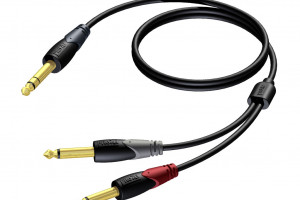
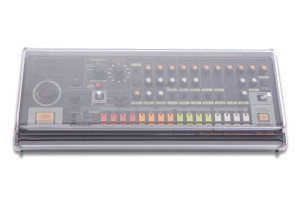
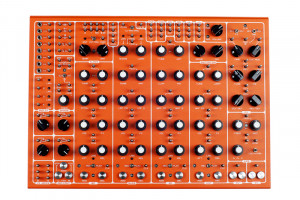
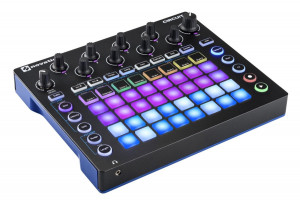
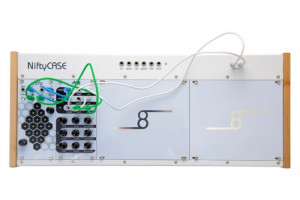
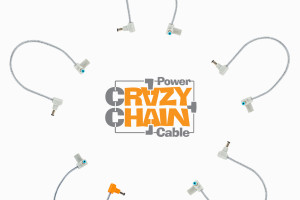
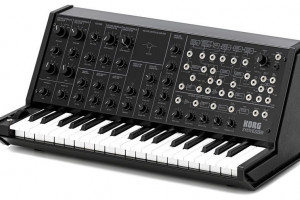
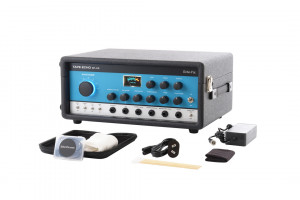
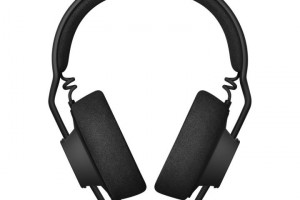
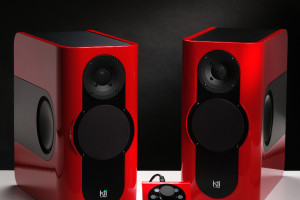





-250x250w.jpg)
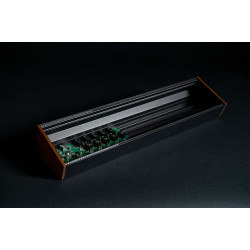
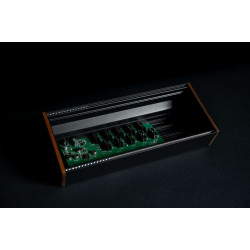
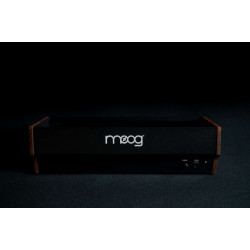
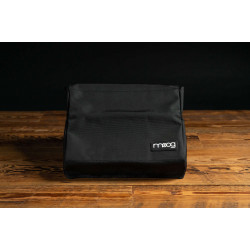
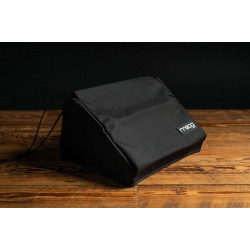
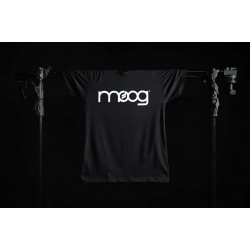
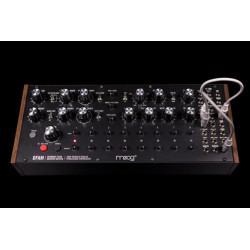
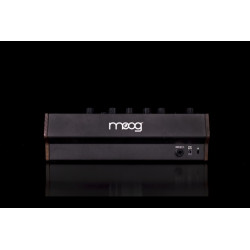
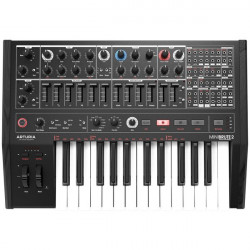
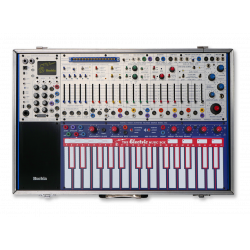
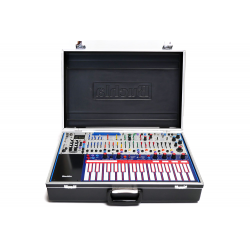
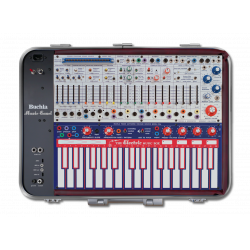
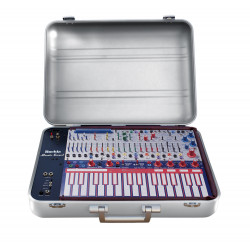
-250x250w.jpg)
